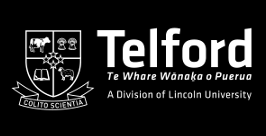Many authorities on the breeding of thoroughbreds write about “judicious” inbreeding and there have been millions of words written on the subject in general, but just what is judicious and what is not? Clearly, it is easy to be wise after the event and to comment learnedly on the pedigree of a Group 1 winner, but it’s quite a different matter for the breeder pondering which stallion to send his mare to.
When one does a computer-generated hypothetical mating, it is somehow reassuring, especially to the novice breeder, when the presence of dark black type indicates a duplicated ancestor. However, the first thing I learned about breeding thoroughbreds was that duplications do not automatically mean good news. In 1976 a friend and I purchased a Sucaryl- Special Mate filly at the yearling sales; the dam was a half-sister to the champion mare Fairfleet and the sire was a well credentialled Group winner in the UK. We were also impressed by the fact that our pride and joy was inbred 4×4 to Honey Buzzard, the dam of Honeyway and the grand-dam of Messmate. Regrettably, we forgot that inbreeding can reinforce undesirable genetic traits just as often as it can produce a desirable outcome. Not only did our filly fail to win, she also proved an utter disaster as a broodmare.
How then can one guard against such results? Well, there are no guarantees, but there are some useful guidelines. Firstly, there’s little point inbreeding to mares or stallions which are not superior producers; the logic of this is inescapable. If one is trying to improve the family one is breeding from, diluting the gene pool is not the way to go. Secondly, look at the available evidence as to whether inbreeding to a particular ancestor has worked well in the past. (This was our mistake – duplicating Honey Buzzard has been spectacularly unsuccessful!) Thirdly, if the evidence is contradictory, read up about the ancestor you are considering inbreeding to. For example, there is growing evidence that inbreeding to Mr Prospector can be very successful; however, this great stallion has a habit of throwing offset knees, apparently a legacy from his mother. If your mare has offset knees, inbreeding to Mr Prospector might not be such a great idea – especially if you are planning on selling the resulting foal.
Clearly, the more you know about what the names in your mare’s pedigree actually mean, the greater your chances of becoming a successful breeder.

